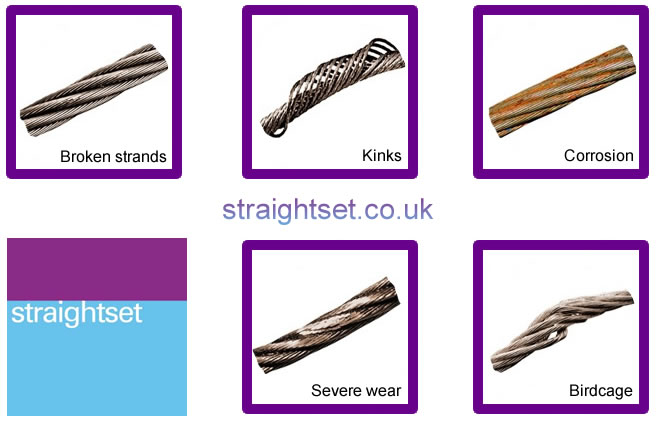This site uses cookies to ensure you get the best experience. Learn more.
Toggle Nav

Wire rope or cable is made by weaving many individual wires together to produce a product that is both strong and flexible. Wire rope is used in many safety critical applications within vehicle maintenance workshops. Some of these applications include vehicle ramps, cranes and engine lifting devices. A cable failure in one of these applications could have very serious consequences.

Wire ropes on vehicle lifting equipment come under a lot of strain during their life span. Fatigue related damage such as broken strands in the outer wires can be caused by numerous things. Typically these kinds of breaks are caused by the stress put on the parts of the rope continually running in or around pulleys and guides.
When a ramp is loaded and operated with a vehicle, the tension of the ropes increases causing extra stress to the outer core. If any of the outer wires our found to be broken or showing signs of wear, it is time to renew them. Straightset recommends changing the pulleys and pins during each rope change to limit damage to the new ropes.
Kinking of wire ropes is usually caused by poor manufacture of the layers winding process, or from pulleys becoming worn, causing the running surface to narrow and deform the ropes as they pass through. The usual signs of worn pulleys are small shards of steel filings around the base of the vehicle ramps upright posts.
Wire ropes that fail due to corrosion are usually caused by improper lubrication type or lack of regular maintenance. Corrosion is easily identified by the pitted surface or rust patches on the external wires of the rope. The extent of the damage to the interior core of the rope is very difficult to judge and due to this, corrosion is one of the most dangerous causes of rope deterioration.
Severe wear to a wire rope is identified as flat spots or signs of crushing in different points around the rope. These points are usually found in areas that constantly run around pulleys etc and can be a sign of slipping, overloading or narrowing of the ropes, causing damage to the running track of the pulleys. Other causes of wire rope wear, could be the bearings or sleeves inside the pulleys and pins becoming worn and causing the ropes to run at a slight angle to the pulley line.
Birdcage type damage to wire ropes can be caused by a multitude of scenarios. The most common is caused by the ropes twisting out of line, causing the internal core to break through the individual external wires. This can be caused by poor installation, or the fact that all the components the rope runs around or over are not aligned centrally.
If you require more information about wire ropes or to arrange for an engineer to visit your workshop to carry out a safety inspection, please get in touch with Straightset service.
For a professional wire rope inspection, call our service team on 01909 480055